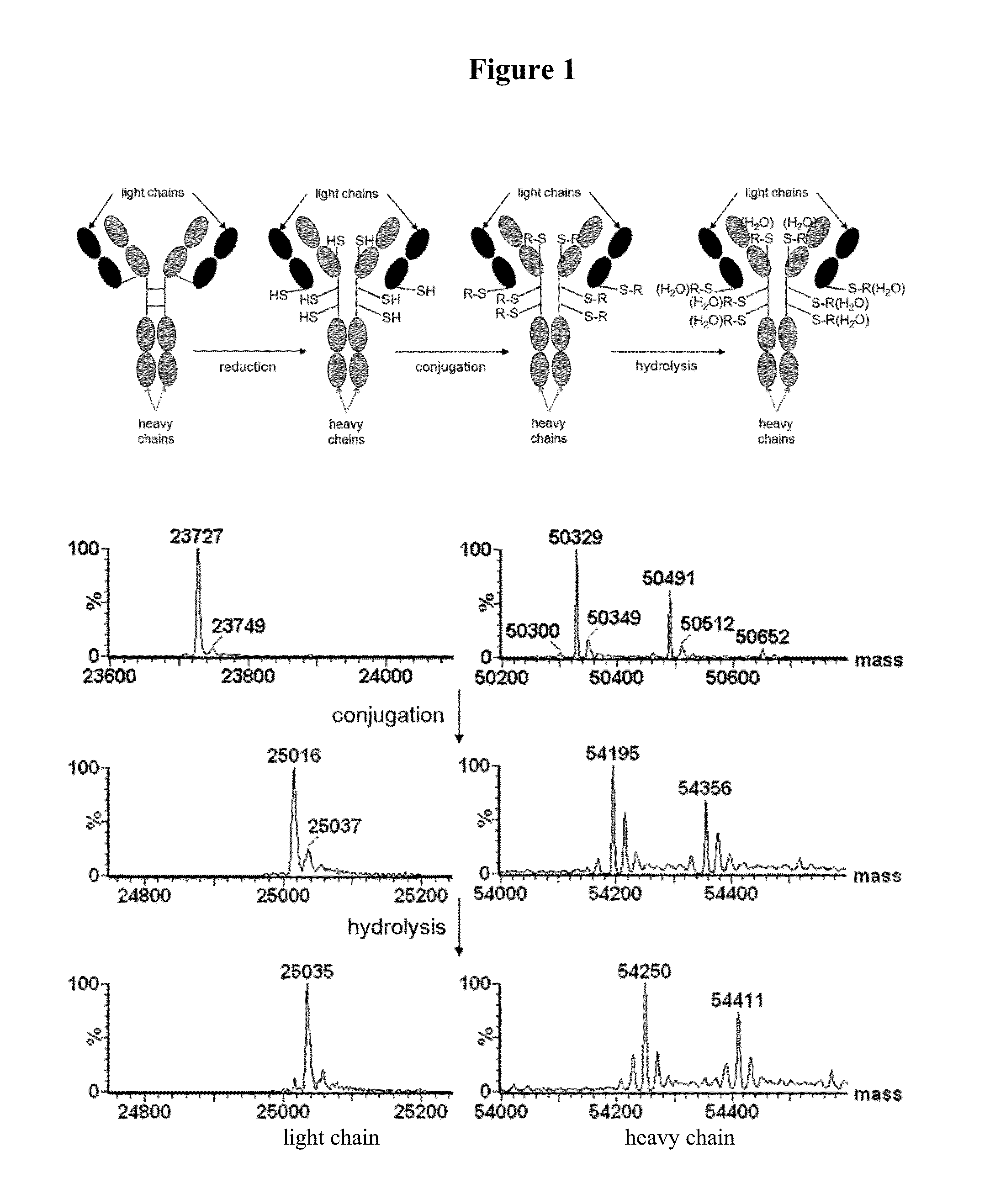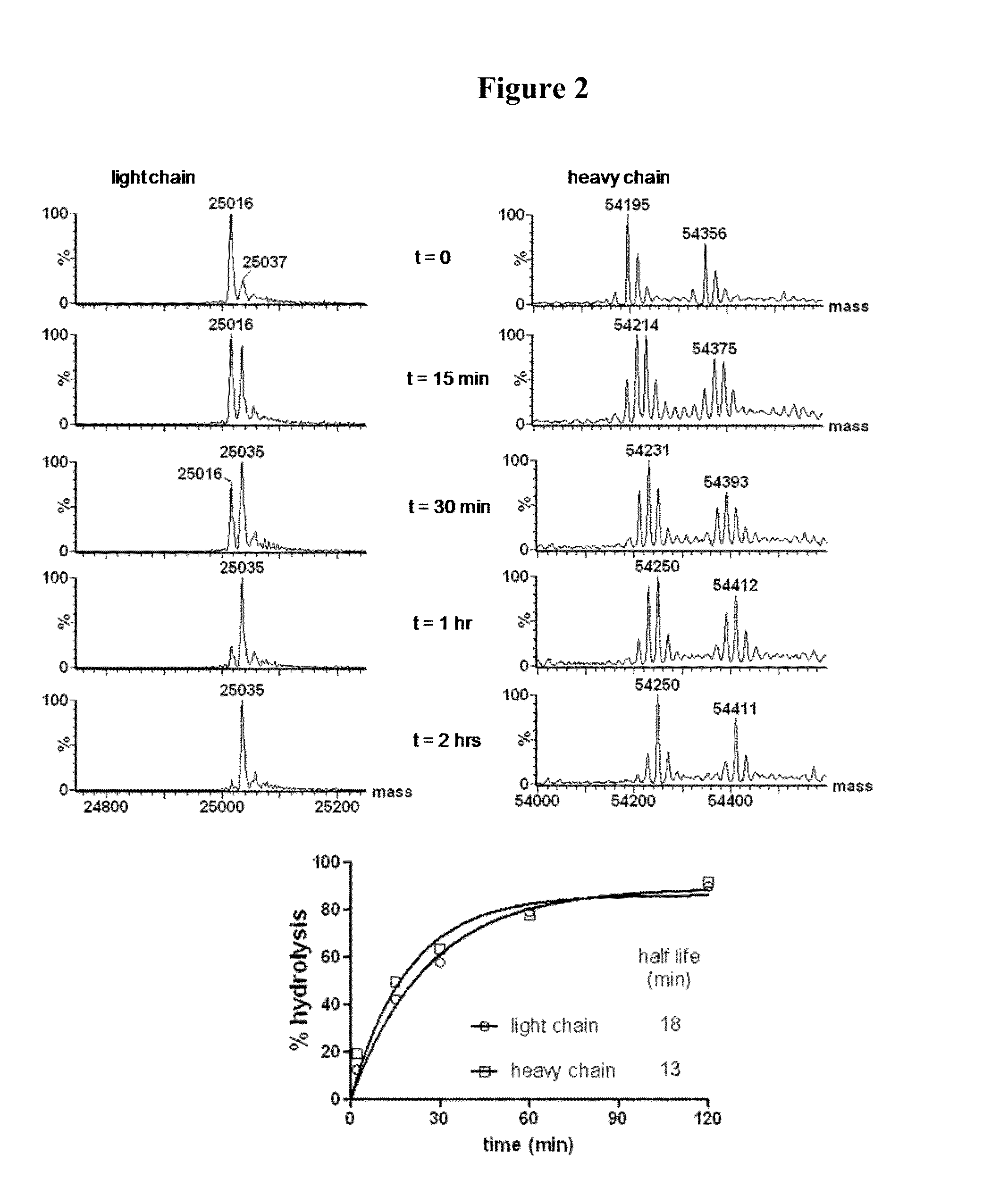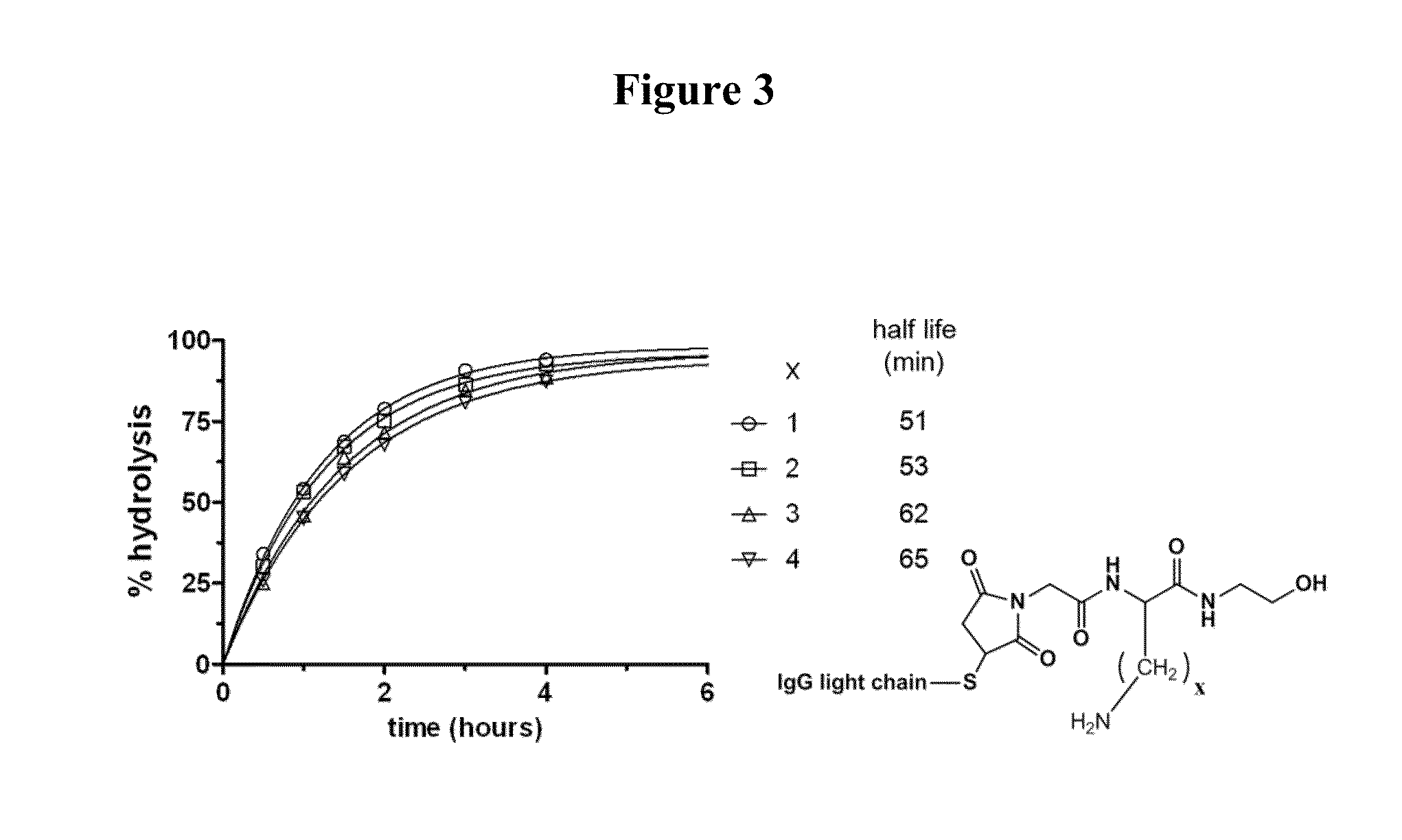Self-stabilizing linker conjugates
- Summary
- Abstract
- Description
- Claims
- Application Information
AI Technical Summary
Benefits of technology
Problems solved by technology
Method used
Image
Examples
example 2
Synthesis of mDPR-Val-Cit-PAB-MMAE
[0495]mDPR-Val-Cit-PAB-MMAE was prepared by coupling Boc-protected mDPR to Val-Cit-PAB-MMAE using standard methods for peptide coupling. The Boc group was removed in the final step.
Preparation of Fmoc-Val-Cit-PAB-MMAE
[0496]MMAE (5.34 g, 6.94 mmol), Fmoc-Val-Cit-PAB-OCO-pNP (5.0 g, 6.94 mmol) and HOBt (1.4 mmol) were charged to a 250 ml round bottom flask purged with N2 and dissolved in 15 ml of DMA. DIPEA (2.44 ml, 14 mmol) was then added, and the solution was stirred overnight at room temperature under inert atmosphere. The product was isolated by preparative HPLC, using a linear gradiant from 30% MeCN (0.05% TFA) to 100% MeCN (0.05% TFA) over 40 min. Fractions containing product were concentrated on the rotovap to a white powder, affording 3.2 g (34%)
Preparation of Val-Cit-PAB-MMAE
[0497]A solution of 3.2 g of Fmoc-Val-Cit-PAB-MMAE in 7 ml DMF and 7 ml diethylamine was stirred for 3 hours at room temperature. The reaction mixture was then concentra...
example 3
Monitoring thiosuccinimide hydrolysis
[0500]Thiosuccinimide hydrolysis of a self-stabilizing bioconjugate can be monitored by electrospray mass spectrometry, since the addition of water to the conjugate results in an increase of 18 Daltons to the observable molecular weight of the conjugate. When a conjugate is prepared by fully reducing the interchain disulfides of a human IgG1 antibody and conjugating the maleimide to the resulting cysteines, each light chain of the antibody will contain a single maleimide modification and each heavy chain will contain three maleimide modifications (see FIG. 1, top). Upon complete hydrolysis of the resulting thiosuccinimides, the mass of the light chain will therefore increase by 18 Daltons, while the mass of the heavy chain will increase by 54 Daltons. This is illustrated in FIG. 1 (bottom), with the conjugation and subsequent hydrolysis of a self-stabilizing maleimide drug-linker of the present invention (mDPR-Val-Cit-PAB-MMAE, molecular weight 1...
example 4
Monitoring t1 / 2 Hydrolysis
[0501]By monitoring the intensities of the non-hydrolyzed and hydrolyzed peaks in the mass spectrum of a self-stabilizing bioconjugate over time (mDPR-Val-Cit-PAB-MMAE), the hydrolysis kinetics can be evaluated. This is done by plotting the percent of the total population which has hydrolyzed at each timepoint versus time (FIG. 2, top). These data are then fit to the exponential equation
Y═Ymax×(1−e(−Kt)
where Y is the observed percent hydrolysis at time t, Ymax is the asymptotic maximal % hydrolysis, and K is the hydrolysis rate constant. The half-life for the hydrolysis reaction is defined as
t1 / 2=ln(2) / K
[0502]When this procedure is performed on the light chain of a reduced hIgG1 antibody, the analysis is quite straightforward as there is only one conjugation site per light chain and the reaction is a simple progression from the unhydrolyzed species to the hydrolyzed species with a mass change of 18 Daltons. Performing this analysis on the heavy chain is c...
PUM
 Login to View More
Login to View More Abstract
Description
Claims
Application Information
 Login to View More
Login to View More - R&D
- Intellectual Property
- Life Sciences
- Materials
- Tech Scout
- Unparalleled Data Quality
- Higher Quality Content
- 60% Fewer Hallucinations
Browse by: Latest US Patents, China's latest patents, Technical Efficacy Thesaurus, Application Domain, Technology Topic, Popular Technical Reports.
© 2025 PatSnap. All rights reserved.Legal|Privacy policy|Modern Slavery Act Transparency Statement|Sitemap|About US| Contact US: help@patsnap.com



